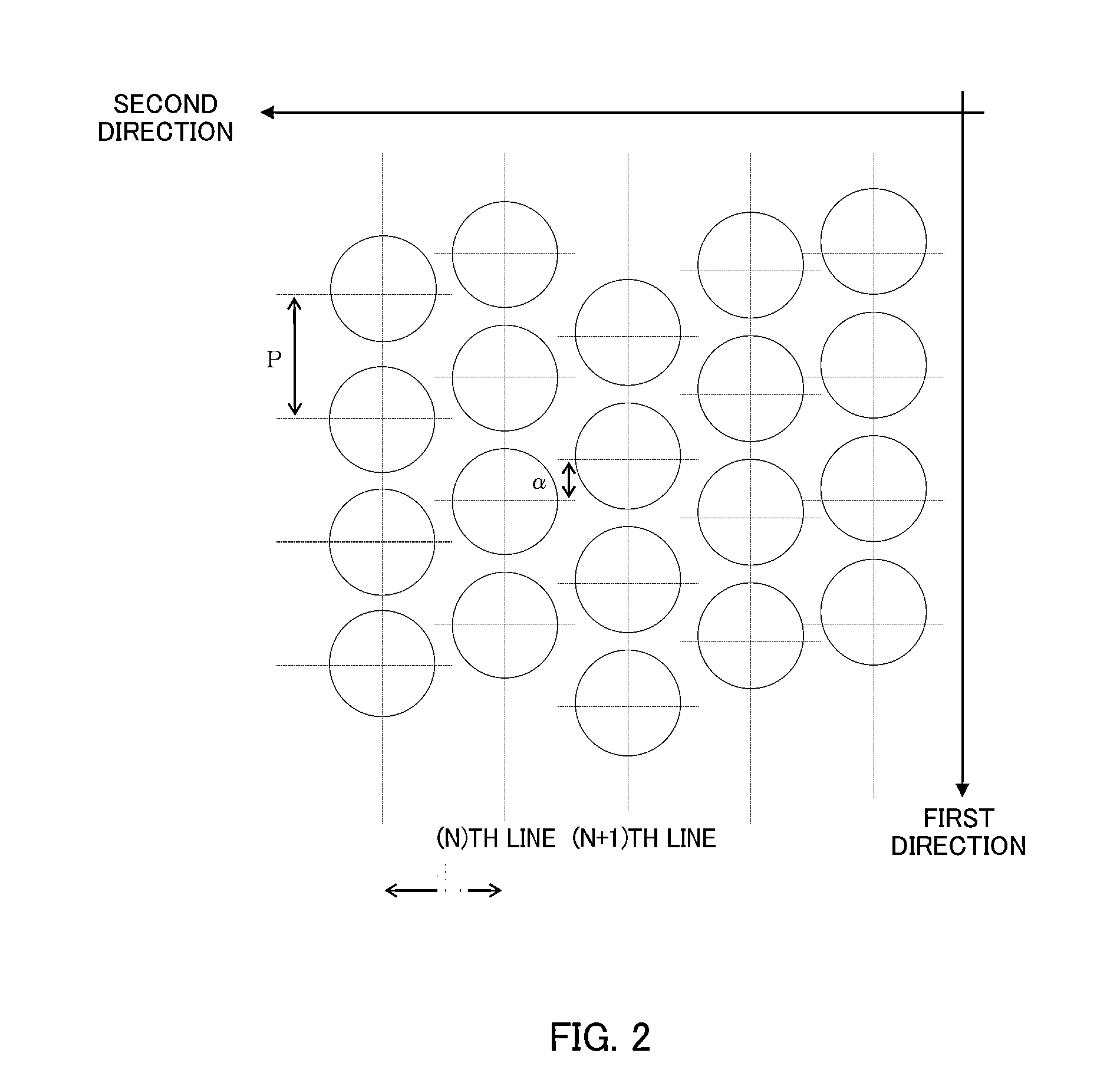Fine-structure layered product, preparation method of the fine-structure layered product and manufacturing method of a fine-structure product
a technology of fine-structure layered products and manufacturing methods, which is applied in the direction of liquid/solution decomposition chemical coatings, instruments, applications, etc., can solve the problems of increasing drawing time, affecting the quality of the product, etc., and achieves excellent environmental resistance, weather resistance and long-term stability, and high productivity.
- Summary
- Abstract
- Description
- Claims
- Application Information
AI Technical Summary
Benefits of technology
Problems solved by technology
Method used
Image
Examples
embodiment 1
[0085]In Embodiment 1, as the inorganic layer 13, used is a hardened sol-gel material layer (hardened material layer of the sol-gel material) that is a hardened material of the sol-gel material. The sol-gel material is a compound group such that hydrolytic polycondensation proceeds by action of heat and catalyst and that the material is hardened. Examples thereof are metal alkoxide (metal alcoholate), metal chelate compounds, metal halide, silane halide, liquid glass, spin-on glass or reactants thereof, or these compounds or reactants with a catalyst to promote hardening contained. Corresponding to required physical properties, the compounds or reactants may be used alone, or in combination of a plurality of kinds. Further, siloxane materials including silicone, reaction inhibitor and the like may be contained in the sol-gel material. Furthermore, as the sol-gel material, it is possible to use not only an unhardened material but also a partially hardened material. Herein, the partia...
embodiment 2
[0113]Embodiment 2 will be described next. In Embodiment 2, as the inorganic layer 13, used is an inorganic material layer that is a layer in which an unhardened sol-gel material is further contained in the hardened material of the sol-gel material. By thus using the hardened material of the sol-gel material, control of the refractive index is made ease. Further, the sol-gel material is added to voids and the like existing in the hardened material of the sol-gel material to fill the voids, and it is thereby possible to obtain the effects such as improvements in the refractive index and improvements in physical strength. Furthermore, since the unhardened sol-gel material functions as an adhesive, it is possible to laminate the inorganic material layer to another substrate. As a method of containing a unhardened sol-gel material in the hardened material of the sol-gel material, there are a method of immersing the hardened material in a solution of the sol-gel material, another method ...
embodiment 3
[0117]Embodiment 3 will be described next. In Embodiment 3, as the inorganic layer 13, used is an inorganic fine-particle layer that is a layer containing a mixture of inorganic fine particles, binder polymer and sol-gel material. The inorganic fine-particle layer is a layer containing a mixture of inorganic fine particles, binder polymer and sol-gel material. By fixing inorganic fine particles with binder polymer, and adding the sol-gel material to voids thereof, since it is possible to fill voids of the inorganic fine-particle layer with the sol-gel material, it is possible to obtain the effects such as improvements in the refractive index and improvements in physical strength. Further, since the sol-gel material functions as an adhesive, it is possible to laminate the inorganic fine-particle layer to another substrate.
[0118]As the sol-gel material forming the inorganic fine-particle layer, it is possible to use the same material as the material forming the hardened sol-gel materi...
PUM
| Property | Measurement | Unit |
|---|---|---|
| distance | aaaaa | aaaaa |
| height | aaaaa | aaaaa |
| pressure | aaaaa | aaaaa |
Abstract
Description
Claims
Application Information
 Login to View More
Login to View More - R&D
- Intellectual Property
- Life Sciences
- Materials
- Tech Scout
- Unparalleled Data Quality
- Higher Quality Content
- 60% Fewer Hallucinations
Browse by: Latest US Patents, China's latest patents, Technical Efficacy Thesaurus, Application Domain, Technology Topic, Popular Technical Reports.
© 2025 PatSnap. All rights reserved.Legal|Privacy policy|Modern Slavery Act Transparency Statement|Sitemap|About US| Contact US: help@patsnap.com



